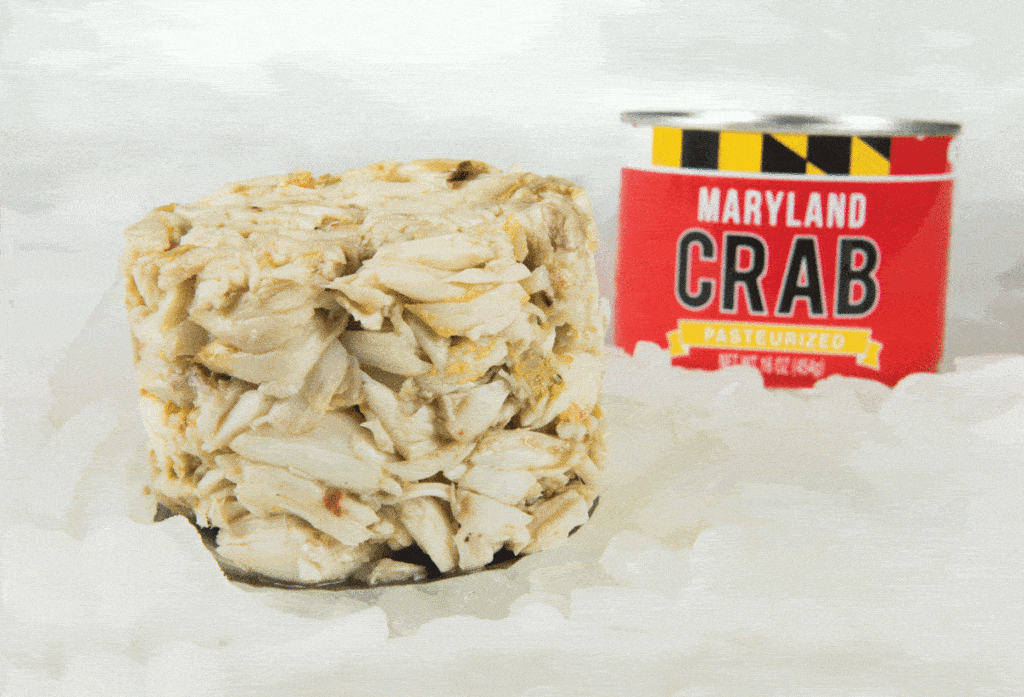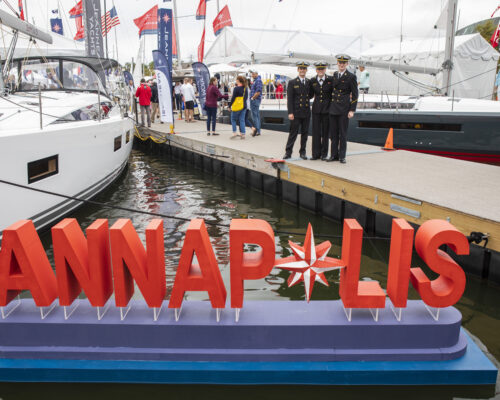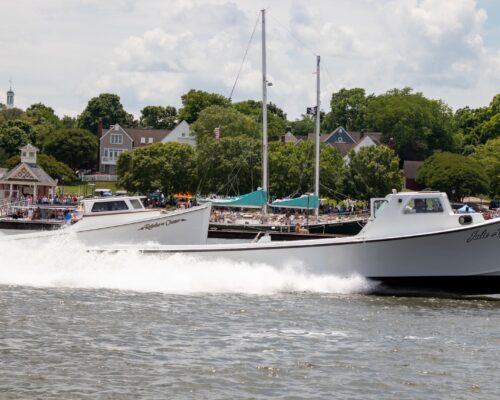The provenance of a crab cake
By anyone’s measure, the highest honor you can bestow a crab cake is to label it “Maryland.” The entire nation recognizes the imprimatur. Some crab cakes are exceptionally unworthy imitations, larded with filler and practically marinated in Old Bay. But you can find what purports to be the genuine article almost anywhere—at a trendy mid-town Manhattan oyster bar, an upscale seafood restaurant in Chicago, even culinary hotspots in Napa Valley, where Maryland crab is offered alongside the West Coast’s beloved Dungeness crab.
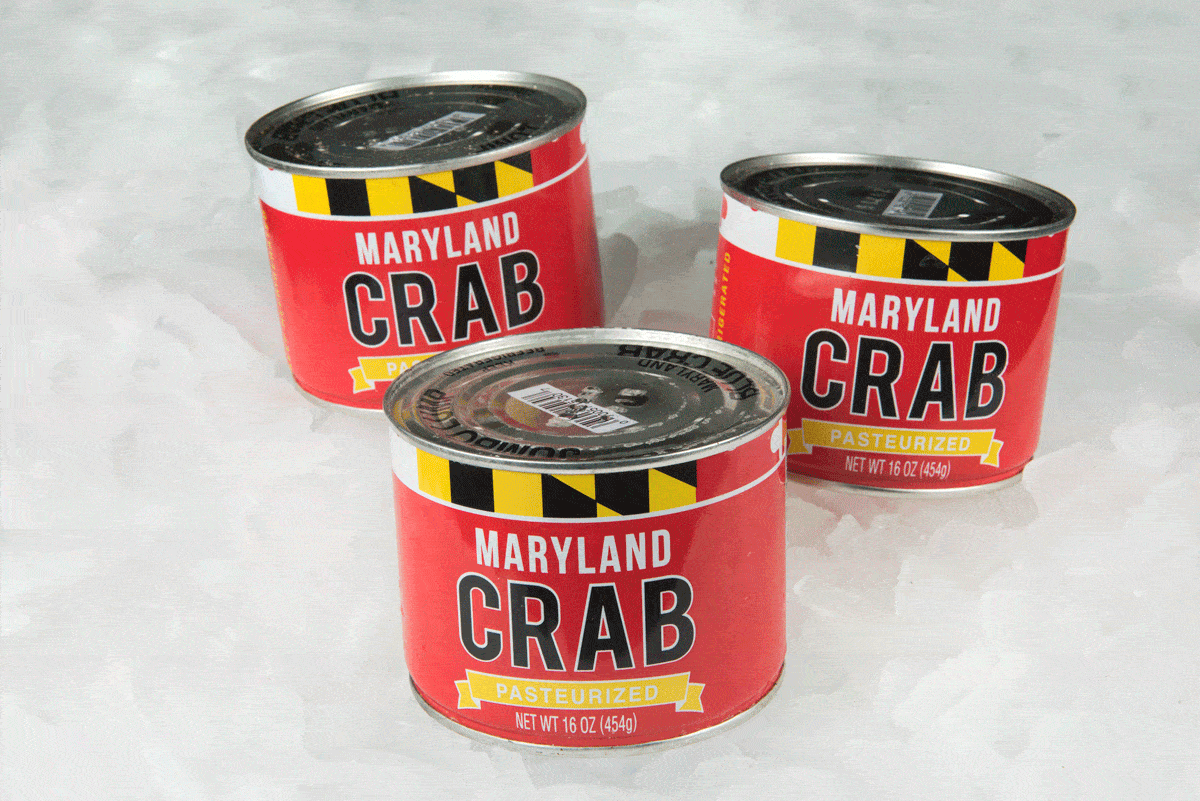
Now that crab season is upon us, countless jumbo-lump orbs of the Chesapeake’s iconic blue crab, Callinectes sapidus, will be served in restaurants, crab houses, dock bars and seafood stalls throughout the crustacean’s native watershed. Some crab cakes will contain all Bay-caught crabmeat. Most won’t.
The truth of the local seafood economy is that, for a number of reasons, the main ingredient in crab cakes sold at Chesapeake Bay restaurants generally isn’t from here. Some meat isn’t even the same species of crab, especially seafood that’s imported from Asia.
“Probably seventy to ninety percent of the crab cakes sold here in Maryland, the meat is not from the Chesapeake,” according to chef John Shields, the dean of Chesapeake Bay cuisine and noted cookbook author. “The percentage of crab that comes from the Chesapeake is really low because there’s just not enough crab. Not only is there not enough crab because it’s sought after, but it has a higher price, too.”
Restaurants fortunate enough to obtain a steady supply of Bay crabmeat from local processors, including Shields’s acclaimed Gertrude’s in Baltimore, generally pay 20 to 25 percent more for the product than they would for imported crabmeat. And they charge customers accordingly.
The guiding principle for crab cake eaters seeking genuine local crab has been buyer be wary. Price is one tipoff; if it seems suspiciously low, the star of your meal probably wasn’t caught anywhere near here. Nor can consumers always trust the menu.
A much-publicized 2015 report by the environmental group Oceana found that 38 percent of the crab cakes marketed in Maryland and Washington D.C. as locally sourced blue crab contained imported species instead. Subsequent, more precise genetic testing by government and Oceana scientists indicated the actual percentage of mislabeled crabmeat is probably higher. Turns out Oceana’s seafood sleuths gave some crab cakes indigenous status that wasn’t warranted.
“Of the correctly labeled blue crabs that we found [in 2015], maybe one third of those likely came from South America,” says Kimberly Warner, an Oceana senior scientist who participated in the original investigation and broader follow-up DNA testing that included preserved specimens from Oceana’s initial study.
That doesn’t mean the 86 restaurants included in Oceana’s survey knowingly mislabeled their crab cakes. Some may have purchased crabmeat falsely labeled earlier in the supply chain. Some mixed Bay crabmeat with less expensive imported crab to economize or to augment the scarcity of local crabmeat during the off-season.
Before confronting your server in a huff over a $30 maybe-or-maybe-not Bay crab cake, it helps to understand the object of your gustatory affection and the dynamics of the crab market.
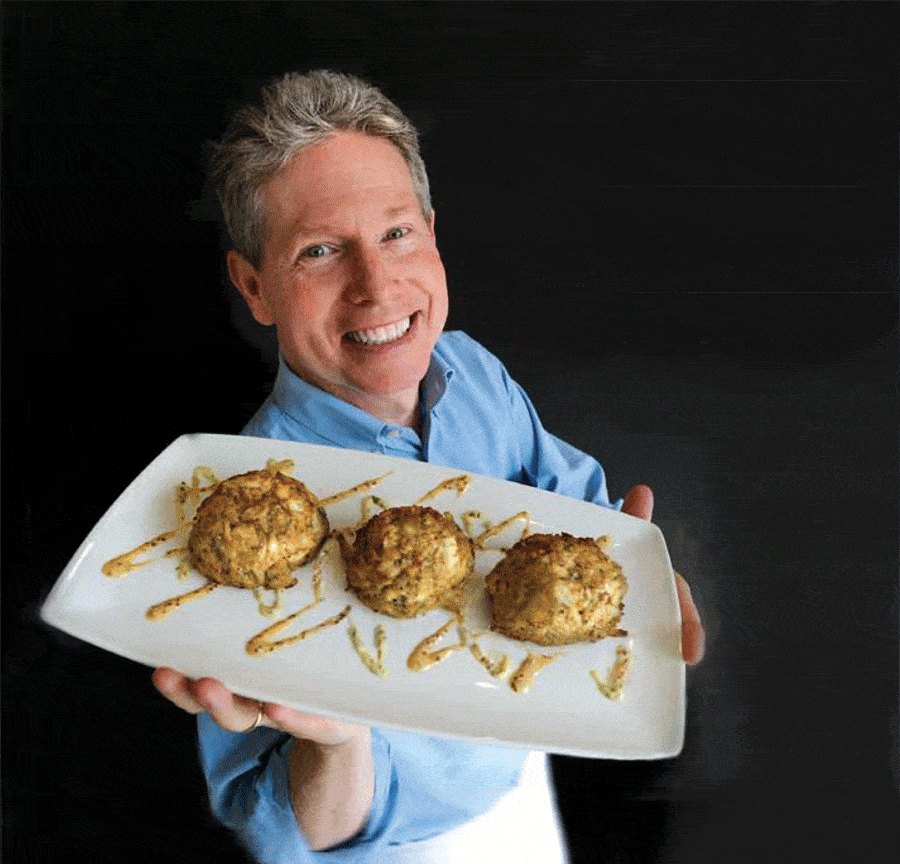
Blue crabs are synonymous with Chesapeake Bay, but Callinectes sapidus swims the Atlantic Ocean from New England to northern Argentina as well as the Caribbean and the Gulf of Mexico. The United States accounts for approximately 75 percent of the species’ global harvest; about 35 percent of the domestic total comes from Chesapeake Bay, which once supplied 50 percent.
H.L. Mencken’s 64,000-square-mile protein factory has slowed but certainly not ceased production since his day. In 2018, about 55 million pounds of crabs were commercially harvested Bay-wide, according to the Chesapeake Bay Stock Assessment Committee’s annual report, a slight increase from the 54 million pounds harvested the previous year. Louisiana and North Carolina trail Maryland and Virginia among the nation’s top commercial crab-harvesting states.
Bay crabs are a particularly prized cohort of their species. Seafood Watch, a sustainable seafood guide for consumers, rates Maryland blue crabs highly for quality and for minimizing bycatch. Crabs caught with trotlines in the state are a Seafood Watch “Best Choice” and those caught in pots are a “Good Alternative.” (The group rates Virginia-caught crabs less favorably, placing them on the “Avoid” list due to a lack of crab-pot, turtle-exclusion device regulations.)
Chefs and seafood lovers favor Chesapeake crabs because they lead a savory life. Bay crabs hibernate in the winter, storing flavor-packed fat that their warm-water cousins in the Gulf and Latin America can’t beat. Shields believes their brackish environment imparts a distinctive flavor as well.
“You have some salt, you have some fresh water. It gives it a depth and a richness that I don’t taste in other crabmeat,” says the Baltimore native. “I love Maryland crabmeat. It has a very specific flavor to me, but that’s because I grew up here and I think my sensory memory is still there somehow.” (Shields named Gertrude’s for his grandmother, with whom he used to pick crabs for family meals, his grandmother using every speck of picked meat possible.)
In filling consumers’ hefty appetite for their favorite seafood, the Chesapeake’s crab suppliers compete with a robust flow of foreign imports. The United States imported 28,645 metric tons of swimming crab (blue swimming, red swimming and blue crab) in 2018, a nearly nine percent increase over the previous year, according to NOAA’s National Marine Fisheries Service. Most—41 percent—came from Indonesia, followed by China, the Philippines, Venezuela, and Vietnam. When Chesapeake restaurants either can’t obtain or don’t want to pay for local crabmeat, they turn to imported meat, a distinction many consumers fail to notice.
Shields says Southeast Asian crabmeat has a more neutral flavor to which even discriminating Chesapeake diners have become accustomed. Some of his customers had palates so primed by bland Asian-meat crab cakes they became suspicious of the real thing. “People were sending them back,” he says, “telling me, ‘These taste fishy.’”
The chef has used Southeast Asian crabmeat in the past, but doesn’t like the fact some processors bleach the meat. Bleaching whitens and preserves the crab, but also removes tasty fat, he says.
“If you’re going to use it in a recipe that has a good bit of flavoring—say a crab cake with a lot of Old Bay in it and Worcestershire sauce and Tabasco sauce—you’ve got a tasty little thing there,” Shields says of Southeast Asian crab. “But if you try to do an Eastern Shore version where you’re bathing that crabmeat in lemon butter with just a smattering of bread crumbs and maybe a little bit of lemon juice and horseradish, then you want the real deal because that’s all you’re tasting. You’re tasting that crab.” Interestingly, the crab cakes least likely to be mislabeled, according to Oceana’s report, were those sold on Maryland’s Eastern Shore, where only nine percent were improperly identified as opposed to more than 45 percent in Annapolis and Baltimore.
In Oceana’s 2015 study, most of the imported crabmeat masquerading as blue crab in locally sold crab cakes came from Southeast Asia. The U.S. Food and Drug Administration recognizes 13 crab species on its list of acceptable market names, but only one, Callinectes sapidus, can be sold as “blue crab.” The blue crab imposter detected most often in Oceana’s DNA testing was the Indo-Pacific blue swimming crab Portunus pelagicus.
If a blue swimming crab by any other Latin name tastes the same to many consumers, where’s the harm?
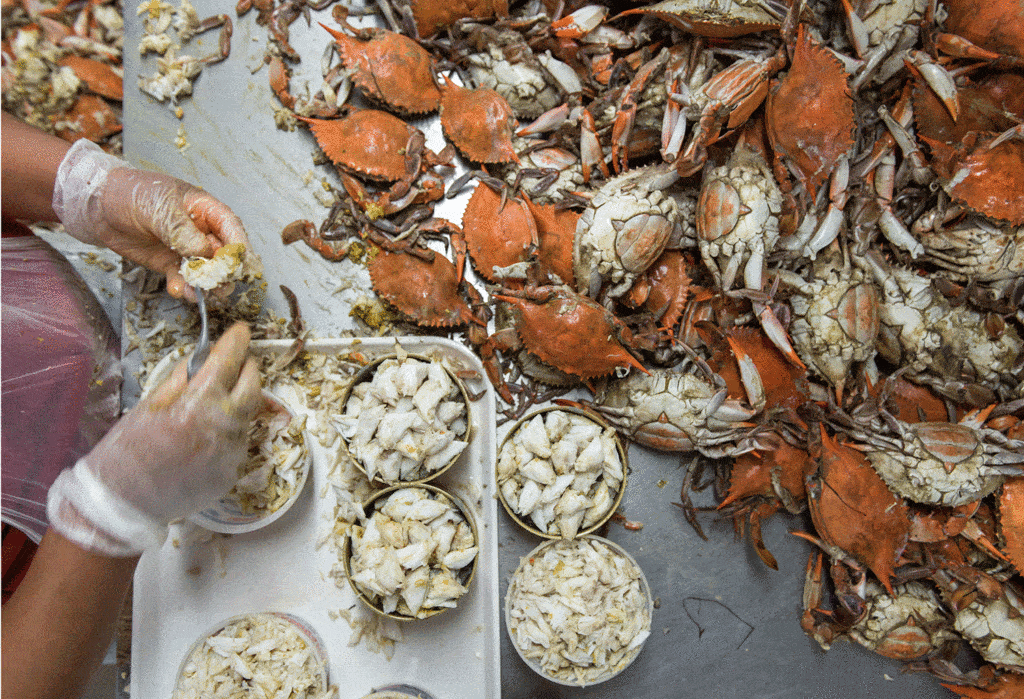
“It undermines local fishermen and seafood businesses that abide by the rules,” says Beth Lowell, an Oceana senior campaign director who participated in the group’s study. “They are competing with a market that’s flooded with mislabeled seafood.” With the Bay’s commercial crab harvest strictly regulated, watermen, processing plants, wholesalers and restaurants can’t competitively price their supply of crabmeat.
“It has ripple effects throughout the supply chain and the local economy,” she says.
And, Lowell argues, the public gets a false sense of the fishery’s sustainability when mislabeling is allowed to continue. “If we always call everything Maryland blue crab or Chesapeake crab, seafood consumers are going to think there’s an unlimited supply.”
The Bay’s crab population declined in the 1990s and early 2000s, culminating in a federal disaster declaration for the fishery in 2008 and tightened restrictions on the harvest. The outlook for Bay crabs is less blue than it was a decade ago, and regulators try to keep it that way, setting harvest targets to ensure the population’s sustainability.
An iconic Chesapeake brand, Phillips Foods of Baltimore, set the imported crabmeat movement in motion here in the 1990s. Searching for sources beyond the Bay’s imperiled blue crab supply, the company established operations in the Philippines harvesting, processing and importing Portunus pelagicus crabs. (Such is the nature of Maryland’s tight-knit crabbing industry that both the Phillips and Clayton families launched their businesses on the same small island chain in Dorchester County generations ago.)
When foreign imports ramped up, the first market they took aim at was the crab-eating capital of the East, Chesapeake Bay. “They went after our local markets and kind of saturated them,” says Joe Brooks, co-owner of J.M. Clayton Seafood in Cambridge, one of fewer than two dozen processors remaining in a state that once boasted scores of crab-picking and processing plants. Squeezed by a shortage of local labor and higher overhead than their Asian and Latin American competitors, Bay processors struggled to stay afloat.
Since then, consumer demand in other parts of the country has risen, so imported crabmeat enjoys a more diverse market, one that’s not always in direct competition with Bay crabmeat.
Most of Clayton’s competition these days comes from Venezuela, Brooks says. “They seem to be the ones that all of a sudden you see they’re offering product for sale for low prices.” Except for periodic closures, the Venezuelan crab fishery operates year-round. As a result, “When they’re producing, they can put a lot of meat on the market quickly,” Brooks says.
Some of it has caused problems. Non-pasteurized crabmeat imported from Venezuela and sold at stores sickened two dozen Marylanders the last two summers. The Maryland Department of Health warned consumers off the product at the time, and federal authorities stepped up inspections of fresh crabmeat imported from Venezuela.
Domestic processors like Clayton, which buys its crabs off the boat from watermen, promote their crabmeat’s freshness. “The product we buy is literally caught today, cooked today and shipped and delivered either tomorrow or the next day, so the time in transit doesn’t add up to much,” Brooks says. “We try to go after the people more particular about what they buy and eat. The buzzwords fresh and local and all natural are the things that really help us, and rightly so.”
When Steve Vilnit left his job with a seafood wholesaler in 2010 to become director of fisheries marketing for the Maryland Department of Natural Resources, he wanted to raise the local stature of Bay crabmeat. He launched “True Blue,” a marketing initiative designed to persuade chefs that native blue crab was worth the extra bucks per pound and to steer consumers to restaurants and markets offering the Maryland product.
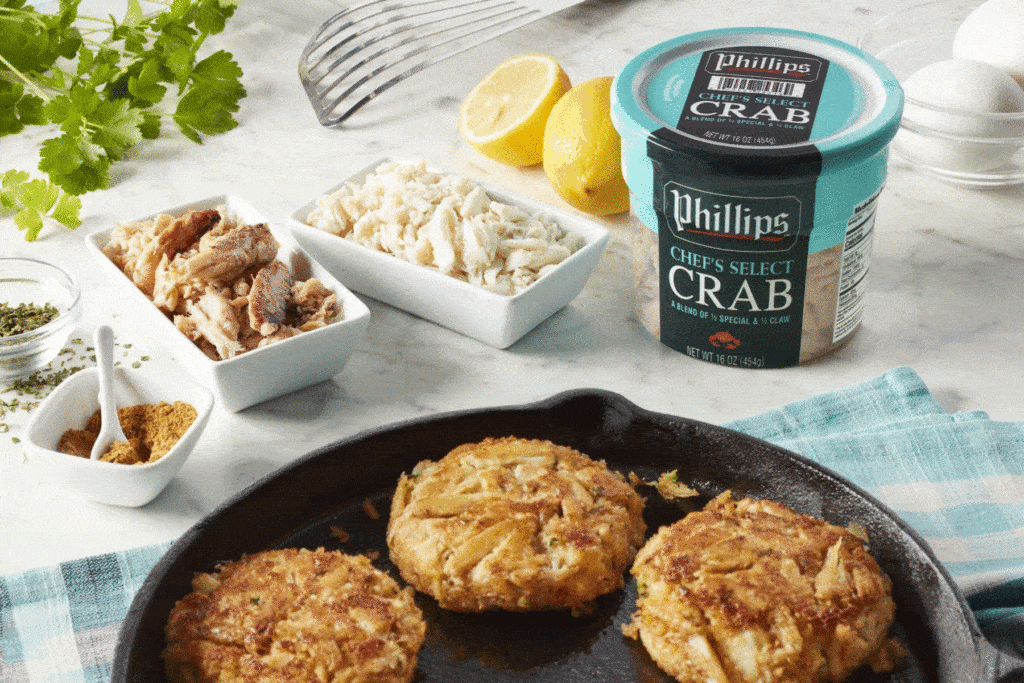
True Blue enrollees who pledge to spend at least 75 percent of their annual crab purchases on Maryland crabmeat get to display the program’s logo, signaling to customers their product’s authenticity and their support for the local industry. To ensure compliance, Vilnit spot-checked the businesses’ invoices, but mostly relied on owners to honor their pledges. Other than de-listing, the voluntary program doesn’t proscribe penalties for violators.
“While that’s not a perfect system, it did at least ensure that they were buying some [Maryland crabmeat],” says Vilnit, who after five years returned to the wholesale trade. The True Blue program is now under the purview of the Maryland Department of Agriculture.
“It’s easy for a restaurant to look at a price list from a wholesaler and just place an order and then it shows up at the back door,” Vilnit says. “They don’t really see how much work goes into it.” He used to escort chefs on field trips to see Clayton’s and other crab industry operations firsthand. (The Agriculture Department now offers virtual tours via social media.) “Things like that just increase the perceived value of the product,” Vilnit says. “It goes a long way toward the price not being the biggest thing anymore.”
More than 70 restaurants and markets currently participate in True Blue, including Shields’s Gertrude’s. Oceana and others applaud the program for raising awareness about local, sustainably sourced crabmeat, but skeptics say it doesn’t address the 800-pound crustacean in the dining room: Can consumers entirely trust restaurants and markets—which aren’t legally required to identify the source of their crabmeat—when the businesses are competing for a finite, pricey product with a highly variable supply? After all, Oceana scientists found a few mislabeled crab cakes even among True Blue-participating businesses.
When Shields returned from a stint on the West Coast to open Gertrude’s in 1998, he found it difficult to find a reliable crabmeat source despite his deep local roots. Most processors had commitments to existing customers. “I had to kind of be the new kid on the block and get in line,” he says. Eventually, J.M. Clayton became his supplier. “I’m a lucky guy, but most restaurants would not be able to do that. And the price point could be a good bit higher, so you also have to have a customer base that’s willing to pay the price.”
Clayton’s Brooks endorses the True Blue program, but acknowledges some businesses either can’t meet or can’t afford to meet its criteria. “Everybody’s got to row their own boat,” he says. “Not everybody has a supplier that says I can keep you supplied throughout the off-season.” Clayton does its best to satisfy clients’ year-round needs, he says. “If we have a good relationship with a restaurant or a market and they say they need product all winter, within reason we do our best to accommodate that.”
Shields concedes even he uses imported crabmeat at times. During harsh winters, when he can’t get fresh Maryland crab and his pasteurized reserves are low, he’ll mix fresh Venezuelan crabmeat with Clayton’s pasteurized canned meat to make the restaurant’s signature “Gertie” cakes or crab cakes du jour.
“Sometimes I’ll do sixty percent Maryland and forty percent Venezuelan. If things are really, really nasty, I’ll go for fifty-fifty,” he says. “It’s a good product. It’s delicious.” Generally, his customers don’t notice, but he tells them if they ask. “Restaurants are businesses,” he says. “They work on the slimmest of margins, so you do your best and you try to make the very best product you can and support your local food economy.”
Federal and state authorities are trying to address seafood chicanery. In 2018 and 2019, the Department of Justice successfully prosecuted two processors—including a Newport News, Virginia, firm—for intentionally mislabeling millions of dollars worth of foreign crabmeat as Atlantic blue crab. The Maryland legislature has twice considered but rejected a proposal to require that all crab products—even those served in restaurants—be labeled with the crab’s specific source.
Oceana’s Lowell says consumers need such bait-to-plate transparency. “You have to require information at the point of landing when it enters the market, either domestically caught or internationally, and have the information follow that fish from the point it leaves the boat all the way to the consumer,” she says. “Then consumers can have more confidence in the seafood they’re buying.”
Shields says he’s all for transparency: “We try to give our servers as much information as we can for where the seafood comes from and where we source it.” He doesn’t think source labeling on menus is practicable, however, and ultimately believes that a crab cake’s quality speaks for itself.
“If it’s well prepared, if it tastes good, people are going to enjoy it,” he says. “If you say in bold letters this crabmeat is not from the Chesapeake, it changes their perception.”

